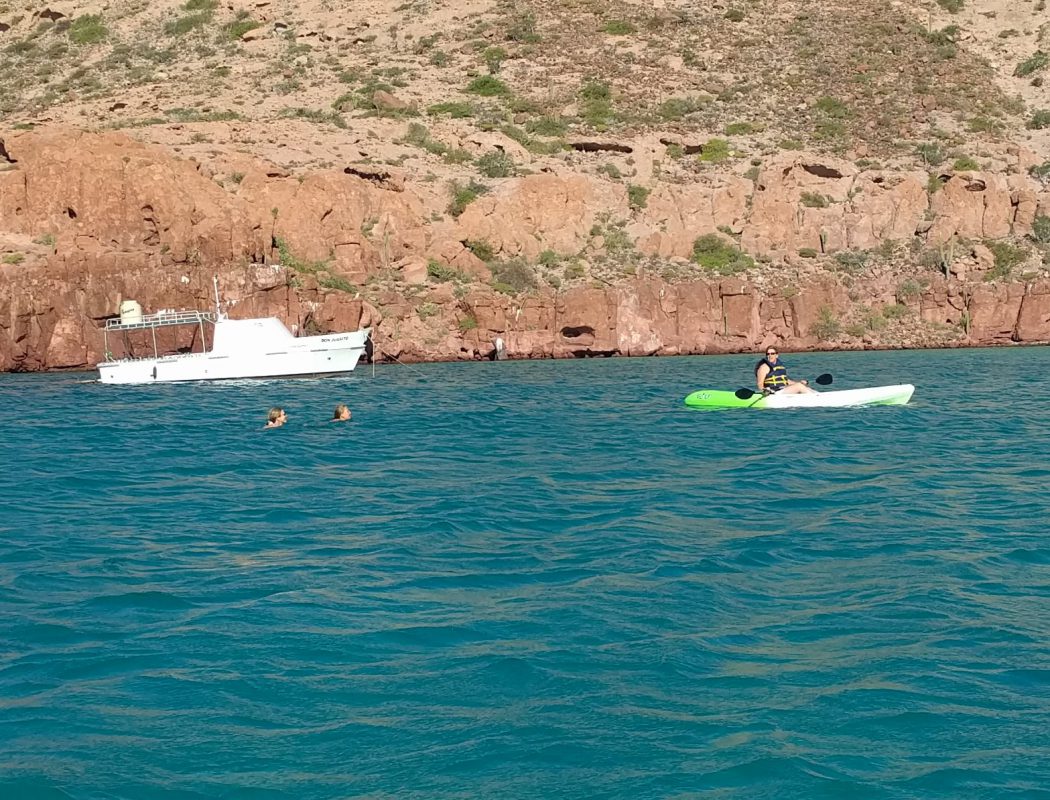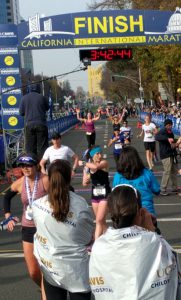One of my chief concerns about sailing for an extended period of time is not staying active enough. Chris would read me blog posts about someone who does yoga on board, or he would tell me about island hiking trails. But that didn’t seem enough. I have been a runner all my life. Even if there were decent trails on these islands, I wouldn’t feel comfortable running them alone.
I didn’t join Chris for the move from San Diego to La Paz. This seemed a bit much for me to take on. Instead, I enjoyed one of the best Minnesota Fall seasons ever (in terms of mild temperatures). I spent the Fall volunteer coaching with the Wayzata Middle School boys cross country team. Chris and I had just became empty nesters, and everyone kept asking what I was going to do with the kids gone. I’m not one to have long term plans, but in August the inspiration hit to train for my first marathon in 12 years, Cal International on December 4. My goal was to qualify for Boston 2018 where our daughter is attending school at Northeastern.

Now my worry was how am I going to qualify for Boston when I’m on a sailboat during one of the final weeks of training? Well, I rationalized I am not an elite marathoner so if I run a bit slower, in the big scheme of things, it really doesn’t matter. However, not being prepared for a marathon can result in a very painful race. I planned my training so I would run my final 20 miler on the last day before departing to Mexico.
So, I was born in Minnesota, land of 10,000 lakes. But I don’t like to swim, more specifically, the shock to the body when jumping in. Being from Minnesota, we took swimming lessons during June mornings when the air temperatures were frequently in the 50s-60s. I speedskated in sub zero weather on a very windy lake. So I should be able to cope with cold water. But I don’t.
Arriving at our first anchorage, Ensenada Grande on Isla Partida, now what to do for fun? I saw we were fairly close to land. Then it hit me. I could aqua jog to shore. Until recently, I always thought you needed a special belt to aqua jog. My daughter, who runs at WVU, was injured last summer. She spent hours and hours aqua jogging in the pool. She told me belts were for wimps. So, this was a great cross training idea for my marathon. Aqua jogging! Who knew? No impact, and it gets you very fatigued (especially the upper body). And the salt water keeps you buoyant. So, this was my new training regime. I aqua-jogged three days during the trip. Now I had greater appreciation for the water, and jumping in wasn’t quite so bad.
Another day I took the kayak to the beach in Bahia Puerto Balandra to run on land. Although it was pretty populated and had good roads, I still didn’t feel comfortable running alone. So, on this day I did 10×2 minute runs on the beach. I imagine I looked quite strange to the locals, running back and forth in the heat. Generally I only run 4 days a week, so this schedule of aqua-jogging and one beach run seemed sufficient to keep me on track.
After returning to Minnesota, I had about one week left of training, and I felt great! I ran the marathon in 3:42, well under my Boston qualifier of 4:10.
So, I got a wet suit for xmas and plan to continue with my aqua training during my month-long sail in January.


So glad this proved solid training for you. I love the no impact version of running. This is encouraging me to do this in the BVI. Looking forward to reading how your training goes for your month in the Sea of Cortez.